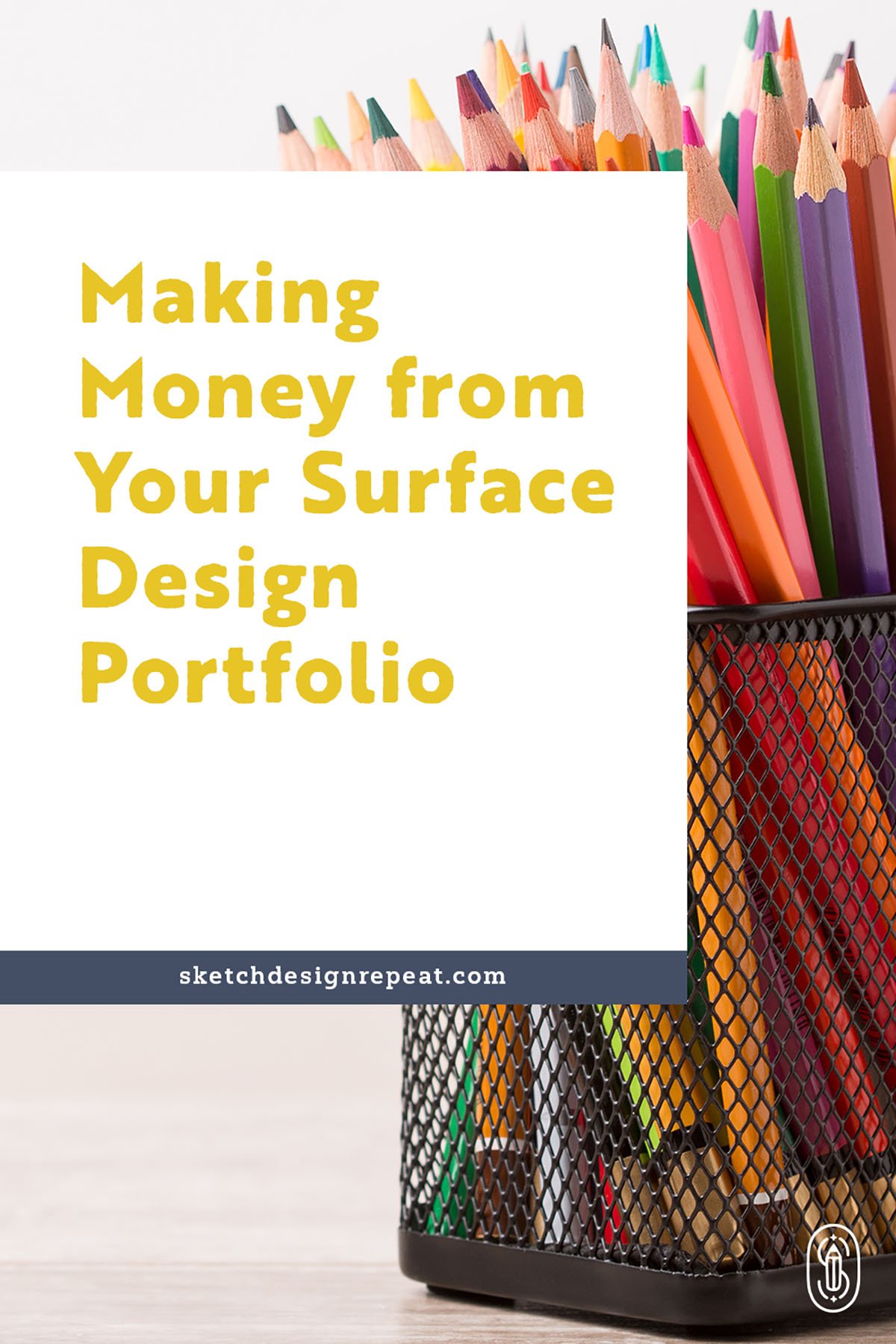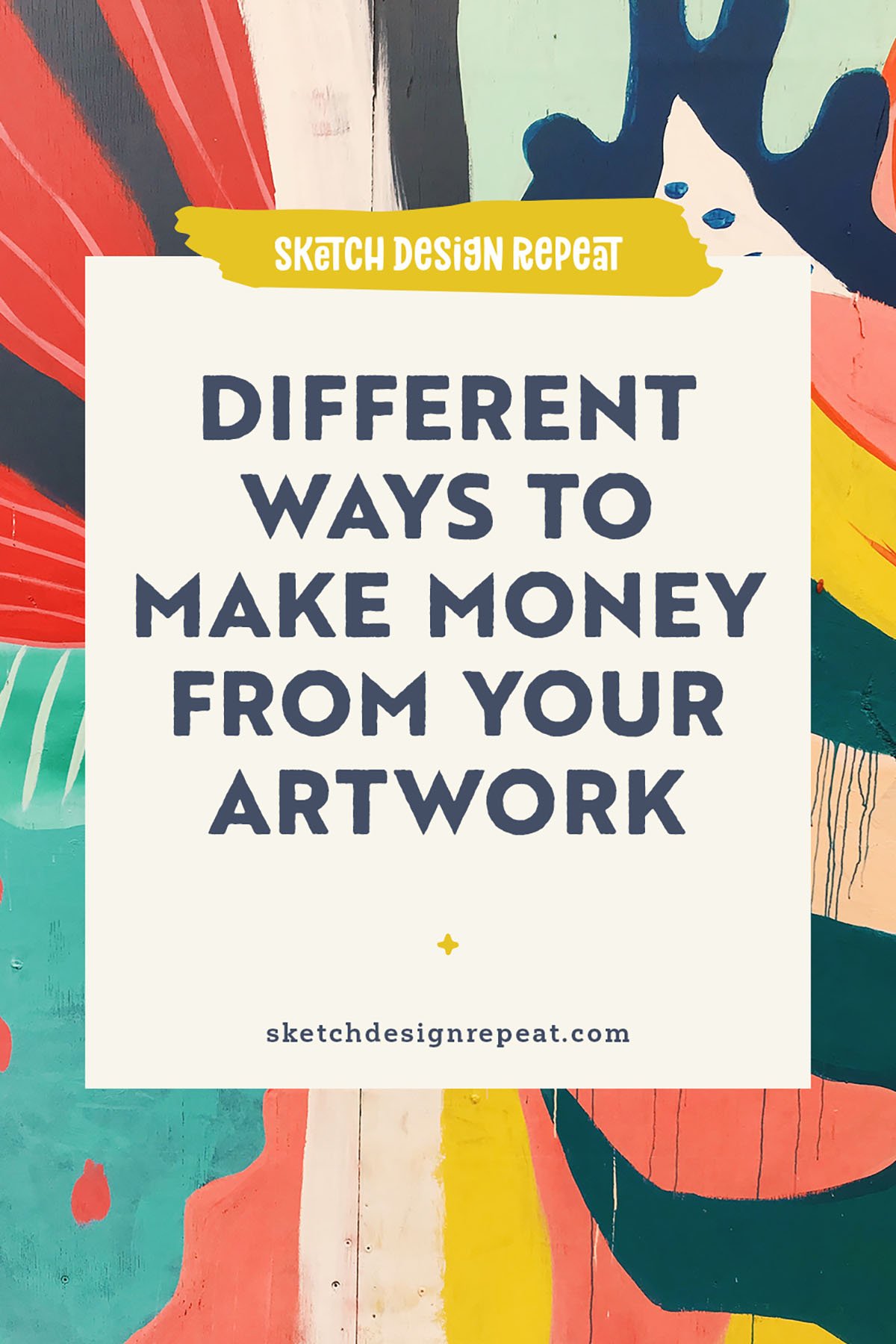As artists, we constantly dream up new ideas for designs we can add to our surface design portfolio. And that’s important for a number of reasons: to develop your art style, to improve your sketching or illustration skills, and to increase the amount of artwork you have to show potential clients.
But when designers think about their portfolio and how to actually make money from it when pitching their art to companies, many only consider royalties. However, there are several other ways you can leverage your portfolio to gain income. So first, let’s discuss art licensing…
What is art licensing?
Licensing is when you loan your artwork to a company in exchange for compensation. You keep the copyright of your artwork (unless it’s a buyout — see below) and are able to license the same design out again to different companies as long as there’s no overlap in contract terms.
Each licensing agreement will have its own unique terms, but it is important that every license be limited in one or more ways — and for you as the artist, the more narrow you can set the terms, the better.
What does copyright mean?
Copyright is the legal right of the owner of intellectual property (aka. your artwork). Now every country has its own copyright laws, but your artwork is legally yours once you created it, and only you have the exclusive right to reproduce it.
Ok, so now that we have some basic definitions covered, let’s talk about the 3 options you have with your art licensing portfolio:
Flat Fee License
When a company licenses your artwork and pays you a one-time fee upfront after the licensing contract is signed.
Royalty License
When a company licenses your artwork and you receive a percentage of sales of all products sold with your art, paid out in regular intervals. The most common intervals are monthly or quarterly, however, I have on occasion seen twice a year royalties.
Buyout
When a company purchases your art and gains ALL rights to it, including it’s copyright. You would no longer have any claim to the artwork or have any say in how the company uses it.
A lot of surface designers don’t consider them, but I don’t always see them as a bad thing. In fact, buyouts can be incredibly helpful for your surface design income because since you lose all rights, they always command the highest price.
Ok, so those are the 3 ways you can directly use the artwork in your surface design portfolio to make money, but there’s another way you can indirectly leverage that same artwork to gain income…
Freelance Projects (aka. Work for Hire)
Some artists may think that “work for hire” is a dirty phrase, but I’ve personally found freelance work to be an incredibly rewarding AND lucrative part of surface design for me. In fact, in my first 3 years as a full-time surface pattern designer, about 40-50% of my overall design income came from commissioned freelance projects.
Freelance work is when a company will hire you to make artwork exclusively for them which means you don’t own the copyright of the designs you create for the project (although I’ve had a few where the copyright transferred back to me after a certain period of time).
And you find freelance jobs just like you do with art licensing — you pitch your art directly to companies. That’s why your surface design portfolio is important because you need to show them the kind of art you create so they can see if you’re a good match for them — it’s just like how you’d use a portfolio as an illustrator or graphic designer.
Now one question I frequently get asked by my Pitch Your Portfolio students is when you approach a company, how do you know HOW they like to work with artists?
The simple answer is… you don’t!
And that’s why it’s incredibly important as a surface pattern designer (especially if you’re new to the industry) to stay flexible and keep your mind open to all options because it makes it much easier to work with companies if you’re willing to do more than just royalties.
So what do you think? Which income options do you want to leverage for your surface design portfolio? Feel free to tell me in the comments below.
And if you enjoyed this post and want to learn more about pricing and contracts for art licensing and the surface design industry, sign up for our email list.
We send out regular emails sharing resources and advice to more than 7,000 artists!
Want to save this post to find it later? PIN IT!


Hi Shannon,
thanks for this post. I’m wondering how you go about finding companies that want to work with freelancers? How do you know what companies to pitch to for freelance work, or should you just keep an open mind if a company you pitch to offers that?
Thanks 🙂
Jenn
Jenn – You find them the same way you do when looking for companies to license your art and most times there’s no way to know how they work with artists without reaching out and asking them 🙂
I am very interested in what you have to say more about SPD 🙂 I’m restarting my drawing days and get into it. I’d love to focus also on tribal patterns. Not American Indian patterns necessarily.
Hi Shannon, it’s a great pleasure to me to read such an awesome infomation blog. I am a South African, looking forward to licencing my artwork. Thank you so much for generously sharing this information. Stay blessed🙏🏽